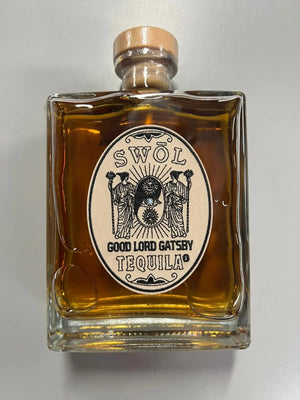Though most spirits have a fair amount of folklore around their history, there is none more colorful than rum. The history of rum, in our minds, belongs to tropical islands, pirates, and general nerdowells. This history has only been reinforced by films, stories, and other cultural moments.
One thing is for certain - that rum comes from the most idyllic parts of the world. Beautiful sunny islands in tropical regions with crystal clear blue waters, white sandy beaches, palm trees swaying in the wind, and a complete lack of hustle and bustle. It is in these regions where rum has its spiritual home.
However, like any great modern-day staple, there has been a journey to bring it to the mainstream. We will explore the history of rum, finding out where was rum invented, what is rum made from, and some other aspects of rum origins. We will explore some of the reasons why it is so deeply rooted in culture, as well as some essential history of the spirit.
As with any spirit, have a look at our website for some of the best rums on the market. We’ve got rums at every different price point so you can try some classic, cheaper ones, and go for some amazing, high-end ones. Rum is often made into cocktails but it is definitely able to be appreciated on its own as well!
How Is Rum Made?

The production methods of many spirits are quite rigid. With rum, there is not really a specifically defined production method. This opens up the playing field to some innovative, unique techniques that can vary between regions, producers, and brands.
Rum does always start with sugarcane though. This is often collected by machete in smaller brands. The cane is cut near to the ground where the largest concentration of sugar is. The root is generally separated from the green tops, which is processed differently. The sugarcane is then cleaned, sliced, and pressed to release the sugar.
The sugar is then generally made into molasses, though some is not. The French-speaking Caribbean islands tend to use the juice of sugar cane, while other islands prefer to use molasses. Regardless, yeast and water are added to whatever sweet base to start the fermentation process.
The fermentation process will determine the richness of the rum. Lighter rums use more fast-acting yeast, whereas deeper-flavored rums use slower-acting. The fermentation process varies massively and will completely affect the body of the eventual spirit.
The product is then distilled. The distillation process also varies massively from pot stills to column distillation. The rum is then able to be aged. The minimum is often one year. Ex-bourbon casks tend to be used. The warmer weather allows for a faster aging process. White rums are filtered to remove color while still having a full flavor.
We will run through some different types of rum below and how they came to be. Though most rums follow this backbone of production, each one will have its own unique flair. Whether its the barrels they use, the way the filter, the way the rum is distilled, and more.
Check Out - The Aging Process - Unveiling the Screts of Aged Rum
Types of Rum

The different types of rum, also known as grades, are all pretty familiar if you enjoy rum. There are products for each and every occasion in this wonderfully relaxed, low-strictness classification.
Dark Rums - Probably what you’re thinking of when you think of rum. These darker rums are generally aged for longer in heavily charred barrels. They have full bodies and a rich flavor profile.
Flavored Rums - Probably one of the most flavored rum. Coconut rum is a big favorite as well as pineapple, mango, and more.
Gold Rums - Gold Rum is one of the least common varieties. They are medium-bodied and can be considered somewhere between light and dark rums.
Light Rums - Also known as white or silver rums, this variety is lighter and a staple of mojitos, daiquiris, and more drinks.
Overproof Rums - These are generally more than 80 proof. The equivalent of barrel-strength whiskey, these have been allowed to be bottled at their pure barrel strength.
Premium Rums - These are your sipping spirits, not for cocktails. These products have been carefully created and often aged for longer periods of time for a smooth and rich drinking experience.
Spiced Rums - Spiced rums have, as you might have guessed, spices thrown into the barrels during the aging process. Spices can include fresh herbs, aniseed, cinnamon, cloves, pepper, cardamom, and more. The Caribbean has a rich and varied cuisine from all of the colonial influence and these spices can find their way into rums.
Also Read - Different Types of Rum: Exploring the World of Rum
We hope you have enjoyed reading a bit about how rum is made and some of the history behind some of the rums we enjoy today. Rum is a growing industry and we feel that it will have the same insurgence as tequila in the coming years. Be sure to find your new favorite rum at our online store today.































